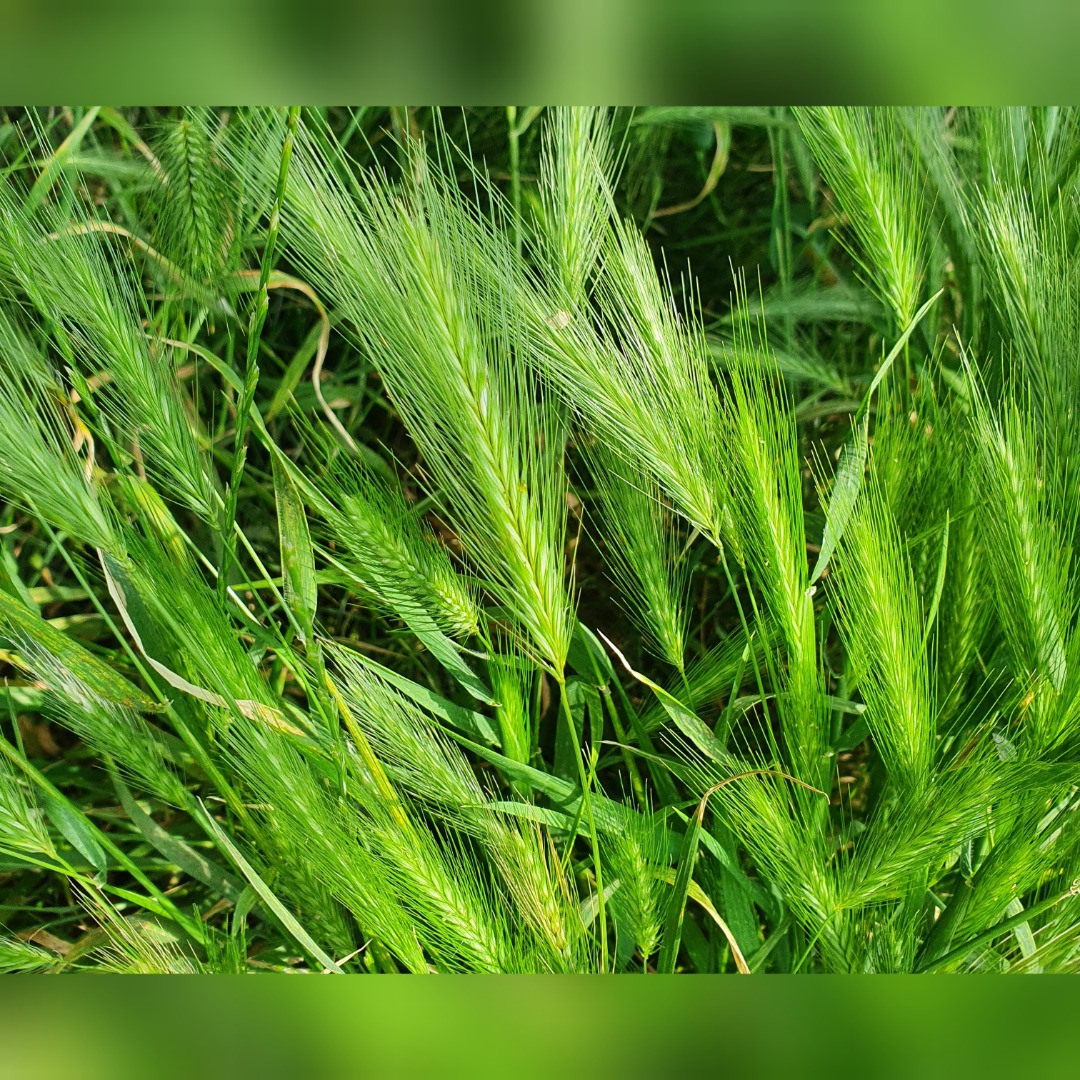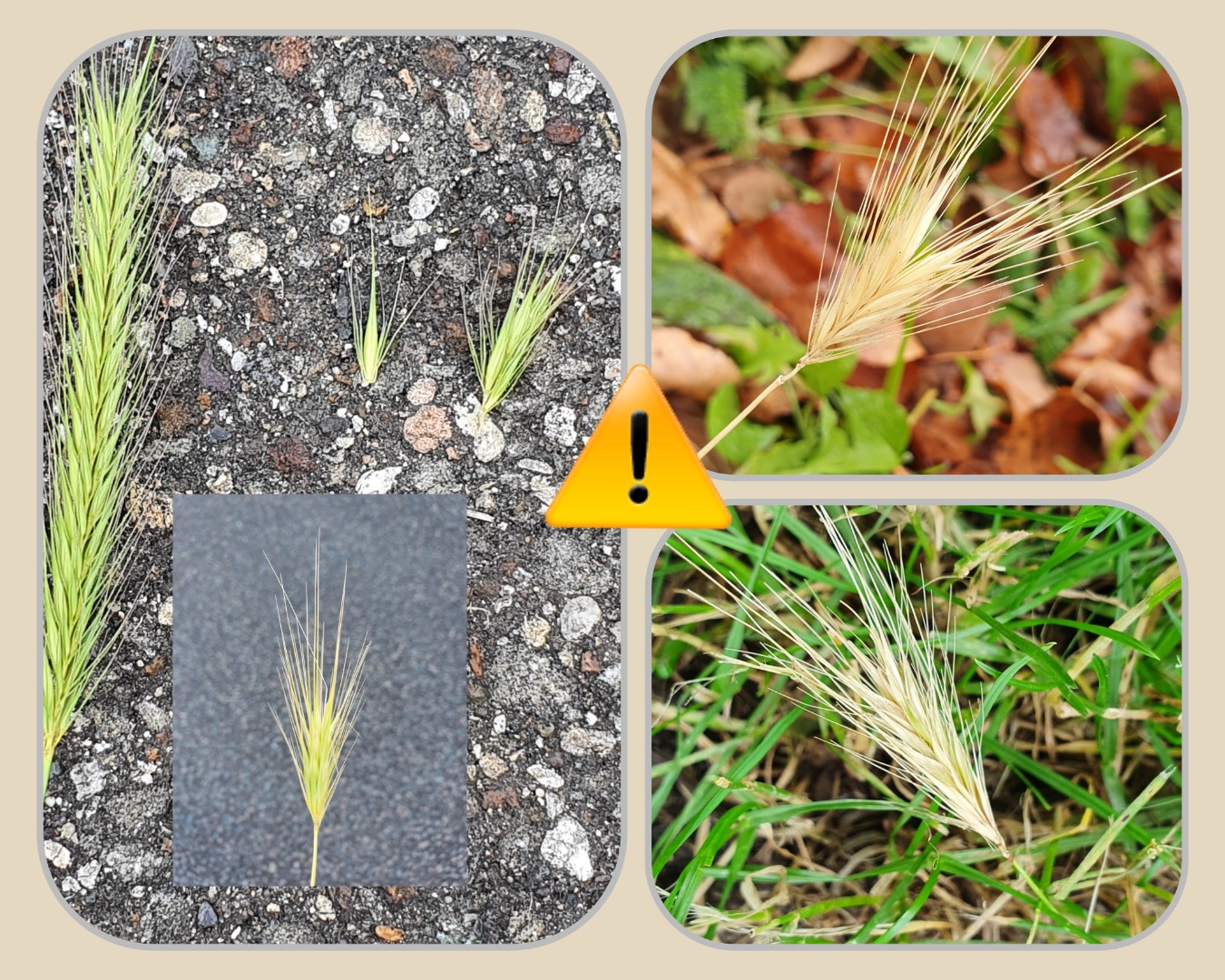During the summer we start to see an influx of grass seed cases arriving in the hospital. The worst offenders are seeds (awns) which look like small darts with a sharp point and fanned tail. The grasses grow to a height and release the seed awns as they dry out. They get caught up in the animal's fur and can end up in all manner of places. They tend to affect dogs more than cats (they are usually good at grooming themselves), but cat owners still need to be aware of these troublesome seeds.
The grass before the seeds begin to dry out and turn yellow

The most frequent area to find grass seeds is in-between the toes or underneath the paw where the dog has stood on a seed and it has got caught up in their fur. The sharp point on the seed works its way into the skin where it can travel further into the paw and up between tendons and ligaments. Often an owner is alerted to their dog incessantly licking at the affected paw and the appearance of a reddened lump. They might limp as it is sore and uncomfortable.
In some cases we simply lance the site and a small abscess discharges along with the seed, but unfortunately it isn't always this simple. Some patients require a sedation or general anaesthetic so that the vet can surgically explore the region to find the seed and remove it. It can be quite difficult to find the seed because it can disintegrate with the moisture. In some cases more than one exploratory procedure is needed to find it.

The ears are also susceptible for collecting grass seeds especially in dogs that have large hairy ears like spaniels. The seeds get caught up in the fur of the ear flaps before finding their way down the ear canal. The dog will show signs of discomfort such as head shaking, holding the head to one side or they might yelp if the ear is touched as it is painful. Up the nose is another place that we find grass seeds. As the dog sniffs through tall grass or on cut grass where the seeds are laying, they can get snorted up the nose. The irritation is often instant and causes them to constantly sneeze and snort, paw at the nose, and blood or discharge may be noticed from the nostril. With their nose to the ground, eyes are also vulnerable and a seed can become lodged in the eye, hidden between the eye and eyelid. The animal will likely rub their face and squint due to the discomfort and the eye may water and look reddened. Cats can also get seeds lodged under their eyelids.
If you notice any of the above signs, please call your vet as soon as possible for the most successful treatment outcome.
The vet will firstly examine your pet. If a grass seed is visible, the vet can sometimes remove it without the need for sedation or anaesthesia, but often this becomes necessary for the safe removal from these sensitive sites.
Although thankfully rare, we have seen cases where the grass seed has pricked the skin and gone unnoticed. It continues to move around under the skin travelling to other parts of the body where it causes swellings, infection or abscesses, making the dog very ill.
Reducing the risk
- After a walk check through your dog’s fur, between the pads on the toes and around the ears. Pay attention to the armpits and groin area too.
- Check your cat's coat when they come in from outside, especially cats with long hair
- Daily grooming will help to clear the coat of debris and seeds caught up in the fur
- Some breeds of dog will benefit from a trip to the groomer for a summer trim.
- Try and avoid areas of long grass or tall grass that has recently been cut where the seeds are dispersed onto the ground.